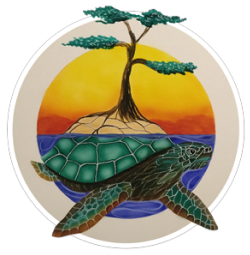nêhiyaw kesi wâhkotohk (how we are related) is a relationship mapping resource based in the nêhiyaw (Cree) language and worldview. The relationship map was developed incrementally through a five-year process of connecting nêhiyaw worldviews of child and family development with the wisdom and teachings from nêhiyaw knowledge-holders.
Over time, in ceremony and with many consultations with wisdom-keepers, the authors began connecting the nêhiyaw teachings into a training resource that would allow (mostly non-Indigenous) human service providers working with nêhiyaw children, families, and communities a means to understand and honor the relational worldview and teachings of the nêhiyaw people. This kinship map came to include nêhiyaw kinship terms and teachings on wâhkomitowin (all relations) in order to recognize all the sacred roles and responsibilities of family and community. In addition, the vital role of isîhcikewin (ceremony) and the Turtle Lodge Teachings (nêhiyaw stages of individual, family, and community development) became embedded within this resource, along with the foundational teachings that create balance and wellbeing that enable one to live miyo pimâtisiwin (the good life).
In child intervention practice, genograms are widely-used as a form of assessment to map family systems, relationships, and patterns. To encompass the broad social environment, genograms are often paired with ecomaps to identify external resources and formal or informal supports. While these tools attempt to understand the contextual reality of families, they come from a particular worldview that holds a distinct perspective on family and community. Indigenous understandings of family, relations, responsibilities, community and development are vastly different than what the genogram and ecomap are able to capture. The Turtle Lodge Teachings are a nêhiyaw parallel to western theories on development, such as Erickson’s Stages of Psychosocial Development, Piaget’s Cognitive Developmental Theory, and Bowlby’s Attachment Theory. These western concepts of development often inform our practice with children, adolescents, and families as they identify life milestones and trajectories that are crucial to healthy development. Similarly, The Turtle Lodge Teachings encompass key rites of passage that are vital to miyo pimâtisiwin – the good life and nêhiyaw mental, emotional, spiritual, and physical development across the lifespan.
Our team (comprised of a nêhiyaw nôcikwesiw, wîcîhtasow, and Métis iskwew) developed this relationship map after years of gathering practice-based evidence found in nêhiyaw language, ceremony, and teachings. Prior to the Covid-19 pandemic, Relationship Mapping training was delivered in person over two consecutive days. Currently, Relationship Mapping is delivered online through Moodle over two consecutive weeks. The purpose is to share nêhiyaw teachings on kinship, community, ceremony, development, and wellbeing in a method that is transferable to practice with Indigenous families.
For more information on Cree Relationship Mapping: nêhiyaw kesi wâhkotohk – How We Are Related, please see the following article published with First Peoples Child and Family Review: https://fpcfr.com/index.php/FPCFR/article/view/407

